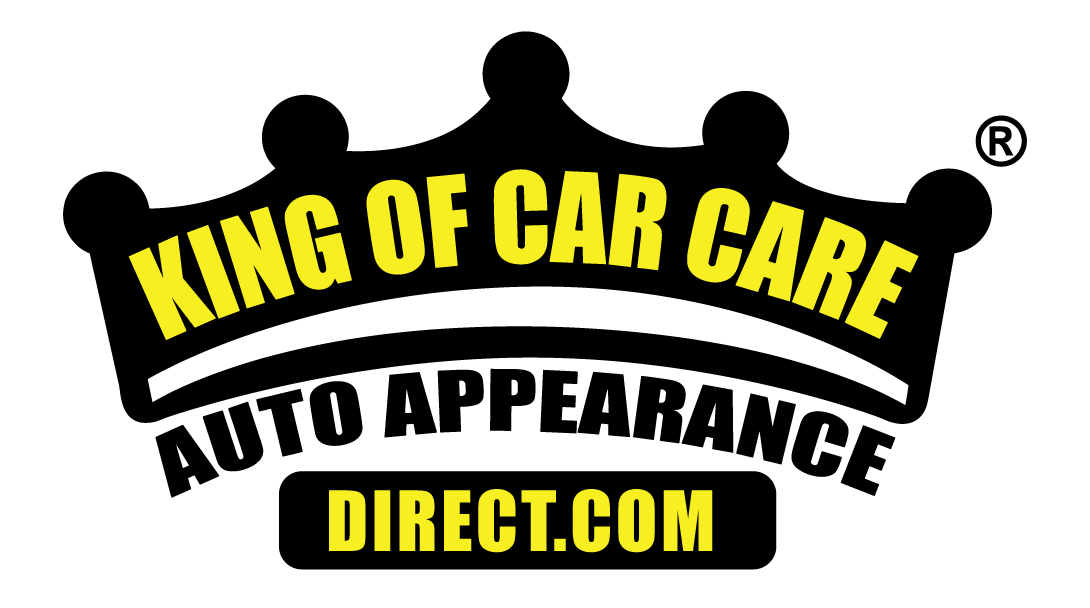Just as body- and paint-work quality can vary with the technician doing the job, paintless dent repair (PDR) is only as good as the operator on the other end of the pry tool. To be sure your tech is performing PDR as if he waved a magic wand, check out the following tips.
Making Magic
PDR is possible today because of the superior quality of late-model paint finishes. Years ago, two things made PDR unlikely: First was the thickness of the car body, and the other was the flexibility of the paint finish. When we started downsizing cars to get better gas mileage, we started making panels from lighter-gauge sheet steel with the same tensile strength as heavier metal. This lighter-gauge high-strength steel (H.S.S.) or high-strength low-alloy (H.S.L.A.) first started appearing on unicoupe cars in the mid-1980s.
The paint finish itself didn’t become resilient enough until the late 1980s and early ’90s. The newer the vehicle, the more likely the paint will move back to contour without breaking; the older the paint finish, the longer UV rays have chewed up the resin and made the finish brittle. Paint finishes get better each year, and it’s likely that newer finishes will withstand even more flexing and bending without cracking.
The Trick
How exactly is PDR performed? The first step is to clean the damaged panel so the dent can be examined carefully from the top side.
If the paint cracked when the dent was made or the dent is in the 1-inch border around most panels where the metal is rolled over or double thick, PDR won’t work. Cracked paint, of course, requires priming and painting to repair. Dents in the very edges of panels or those on a sharply creased styling line generally cannot be repaired, although the most practiced and accomplished PDR technicians can sometimes work wonders with a sharply creased dent; most often, though, the metal is stretched beyond a paintless repair.
Having cleaned the panel and examined the dent, the next step is to shine a bright light at the panel to get a reflection of the area surrounding the dent. By carefully watching the reflection of the light on the panel, the tech can bring the dent exactly up to contour and not overpush the dent. This skill is a matter of training your eyes to see the edges and the exact center of the dent. Just like most people in the autobody industry can spot a paint flaw much faster than the average citizen, a PDR tech can see the metal move much better than someone with an untrained eye.
Most PDR lights are 4-foot fluorescents mounted on a stand that enables them to spin around to any angle, casting the most light on the damaged area. If 110-volt current isn’t available, you can use a reflector board to catch the sunlight or a 12-volt light powered off the vehicle battery. In any case, you want a straight-edge reflection across the dent.
The major hurdle in any PDR job is access to the back side. You can access the area by drilling holes through existing bracing, but this runs contrary to I-CAR’s recommendation that you should not drill holes in late-model vehicles. (I-CAR says that rust is nine times more likely when the factory corrosion protection is breached.)
To avoid drilling holes, most PDR tools are shaped to enable the technician to reach the dent by going through an existing access. This, they say, is what separates the men from the boys. It doesn’t take very long for a new PDR tech to move the dent up and out of the hood or deck lid if no bracing blocks the rear of the dent. However, if the access hole is far back beneath some brace, it takes a talented tech to reach the tool down the inside of the brace, twist the tool and still have enough control to slowly ease the dent out.
Once access is gained, the dent is pushed around and up with the very tip of the dent-removal tool. Many new techs cover the end of the tool with tape, which allows a greater margin for error when moving the metal.
The trick, they tell me, is patience. Unlike a body man’s pick that moves metal visibly each time the dent is picked up from underneath, PDR may not visibly move the metal each time the tool is applied to the area surrounding the dent. Instead, PDR slowly reforms the metal to its original shape. Using the dent tool to rub gently in a circular motion, it sometimes takes 15 to 30 minutes to remove the dent.
If you overpush the dent, most systems offer a plastic punch with a flat end that allows you to tap the crown back down to flush. (The goal, of course, is not to push the dent past contour in the first place. Flexed down into the dent and flexed back up above contour is a lot to ask of a paint job, and a stress crack may result.)
The Secrets of Success
We all come from an industry that pays you to go faster. If the book (flat-rate) time for a particular metal operation says five hours, we all want it done in less time – that’s how we make money. I’ve tried PDR myself, and I understand the principle – rub the point of the tool on and around the dent with a gentle pressure upward. All you have to do, they told me, was keep up that gentle pressure for 10 minutes. I wasn’t more than 60 seconds into it when I thought, “Hey, if I push just a little harder, I can get it done in five minutes!” Wrong.
Many PDR instructors tell you they have better results when they train people who have no preconceived notion about how metal work is done because these folks don’t know it isn’t supposed to take 30 minutes of gentle pressure to remove the dent. Where an existing body man shines is in locating access to the panels.
So what’s the key to PDR success? Practice, practice, practice. This repair process (some PDR systems offer 50 or 60 different-shaped metal-working tools) is indeed an art form. Just like the first time you painted a car or ran the welder, PDR takes skills you don’t possess without practice. One PDR tool manufacturer calculates that it takes three months of everyday practice to successfully remove the average door ding or hail dent and that it takes 12 months of everyday practice to remove a sharp crease or light collision damage.
That, folks, is a lot of practice. What the tech learns in practicing is the feel of the metal, how much flex is possible, how much pressure is enough, which way to work up the dent, etc. – all the things you can’t see in a video tape or read in a manual.
Who Works the Magic?
Most PDR work today is done at wholesale by used-car dealers at auto auctions. They’re looking to have the panels of the used cars cleaned up for a minimum cost and with minimum down time. Rather than sand and repaint a panel with four or five door dings – which ties the car up for a couple days – they’re looking for someone who will get the car ready for sale now. That’s where you come in.
Retail PDR is untapped in most markets, except those localities that have had a recent hail storm. In fact, PDR’s suitability for repairing typical hail dents is the reason for most of the growth in the industry. If you’ve been in an area that had a large hail storm, you’ve seen entire herds of PDR shops setting up in every abandoned gas station and fruit stand around town. After a few weeks of fixing hail-damaged cars for less than the collision-shop’s estimate, many of the less-reputable PDR guys fold up their tents and slip away into the night.
In some areas, insurance companies are writing PDR estimates. However, it’s just as hard for an adjuster to judge the suitability of PDR on a dent he can’t see from the rear as it is to see collision damage over the phone.
Abracadabra
Like making a coin appear from behind someone’s ear, PDR isn’t really magic. It’s simply fine metal work on a surface painted with a very flexible finish. It may also be a profit center for your body shop.
The popularity of PDR is likely to grow as big superstore used-car lots spring up around the country. And, as consumers hear about the repair process, they’re more likely to get a PDR estimate in addition to the conventional repair estimate from your shop. PDR is a process several techs in your shop could do successfully – once you get them to slow down long enough to properly work a dent back up to contour. All it takes is practice, practice … and more practice.
Mark Clark, owner of Clark Supply, Inc., in Waterloo, Iowa, is a contributing editor to BodyShop Business.
No Magic Potion
Not all dents are fixable with PDR. Metal-working tools will remove most uncreased dents, but the area will need to be painted in the body shop if the paint cracks.
Several PDR-tool manufacturers calculate that 85 to 95 percent of fixable dents are accessible from the rear. The other dents are of a size and shape that PDR could cure, but they can’t be reached from the rear – meaning they have to be repaired conventionally. What comprises a repairable dent also varies according to the skill of the technician.
An Old Trick
Around since the 1930s, PDR is popular with today’s car manufacturers, which have a “ding man” working every production shift.
Whether the new-car body is painted or not, manufacturers still want to get the little dings and dents removed quickly so the car can continue down the assembly line. Years ago in our industry, this kind of metal work was called “pick and file,” a process by which the damage was “picked” up from behind and the high spots were metal-filed flat. Today’s new automotive paint finishes are so flexible that the paint won’t crack as the divot is pushed up to contour, making paintless repair possible.



